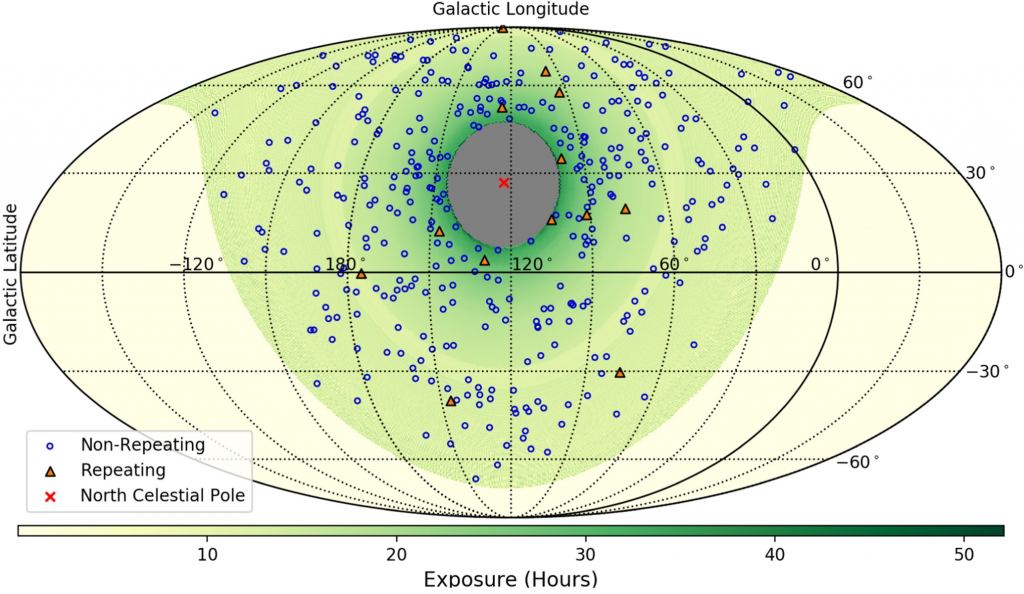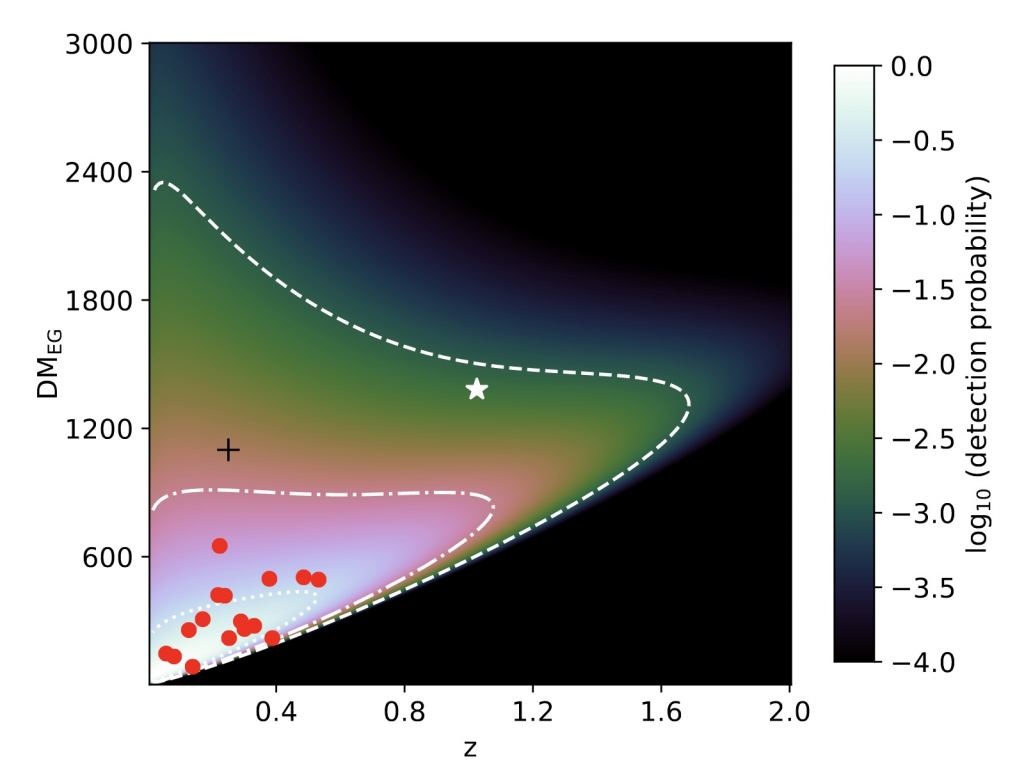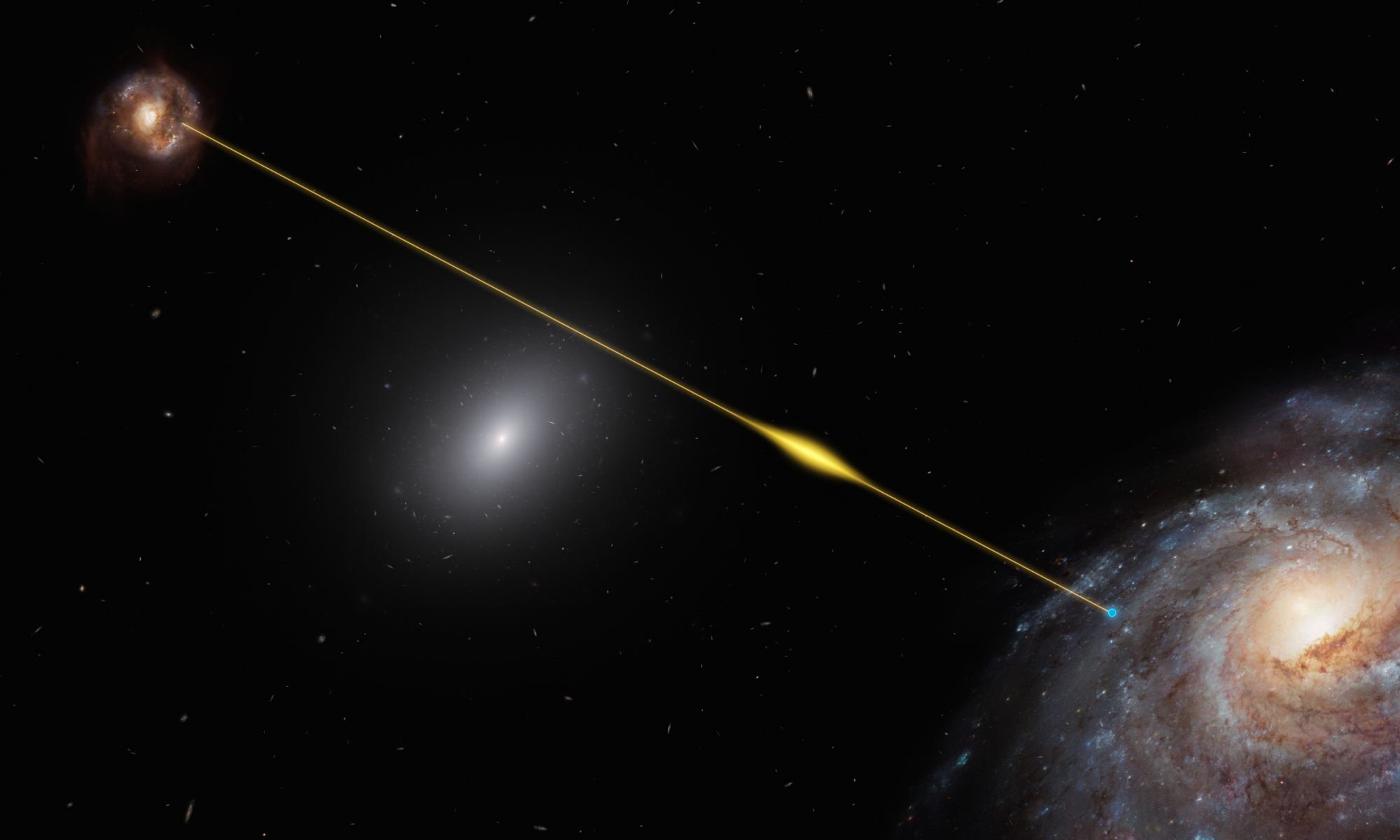Fast Radio Bursts are an astrophysical enigma. They are intense bursts of radio energy lasting anywhere from a fraction of a millisecond to a few seconds, typically with a frequency of around 1,400 MHz, and we still don’t know what causes them. They were first detected in 2007 but were initially so rare and short-lived that it was difficult to confirm they weren’t terrestrial in origin. With the inauguration of the CHIME telescope and other wide-field radio observatories, we started observing lots of them, which confirmed they were both astrophysical and mostly coming from outside our galaxy. Now one has been observed from a galaxy 8 billion light years away, and it could help us solve a cosmological mystery.
The dominant theory for Fast Radio Bursts (FRBs) is that they are caused by magnetars. Neutron stars with an extremely strong magnetic field. Just as the Sun’s magnetic field can trigger solar flares, magnetars could experience magnetic flares that emit flashes of radio light. We know they are extragalactic because they occur all over the sky, not just along the galactic plane of the Milky Way. Measuring their distance is a bit more tricky.

Since FRBs emit a radio pulse at a uniform frequency, we can use what is known as a Dispersion Measure (DM) to determine distance. When the radio pulse passes through ionized intergalactic gas, higher frequencies pass through it a bit faster than lower frequencies. This is similar to the way visible light is refracted by a piece of glass. Violet is refracted the most and red the least because violet light takes a bit longer to pass through the glass than red light. What this means is that rather than seeing the FRB light all at once, we see the lower frequencies a bit later than the higher ones. The more distant the FRB, the more intergalactic plasma it passes through to reach us, and the greater the dispersion.
Of course, to use this for distance, you’d need to know the distribution of intergalactic plasma. If there are clumps of plasma between close galaxies, the FRB would have a dispersion measure similar to that of distant galaxies with little intergalactic plasma between them. Unfortunately, we don’t have a good mapping of intergalactic plasma. It’s a missing part of the “total mass” of the Universe. We know it’s there, we just aren’t sure how much of it is there.
This new discovery could help change that. Known as FRB 20220610A, it was observed by the Australian Square Kilometre Array Pathfinder (ASKAP) radio telescope in 2022. The ASKAP data was precise enough that astronomers could pinpoint its location in the sky accurately enough to pin its origin to a particular galaxy. The team then used follow-up observations by the Very Large Telescope (VLT) in Chile to confirm it likely came from a small cluster of merging galaxies. The VLT observations then determined the redshift of the cluster to find the distance.

The light of the FRB 20220610A traveled 8 billion light years to reach us, making it the most distant fast radio burst ever observed, and likely at the distance limit for FRBs we can currently detect. But more importantly, knowing its distance, we can compare this to the dispersion measure to calculate the amount of ionized gas between galaxies. The idea for using FRBs to map intergalactic gas was first proposed by Australian astronomer Jean-Pierre Macquart, which is why this comparison is sometimes known as the Macquart relation.
If we can pinpoint lots more fast radio bursts, we will be able to build a distribution map of intergalactic gas. From that we can get a handle on the overall mass between galaxies and help pinpoint the total mass of the cosmos. Basically using one mystery to solve another, which is a pretty cool trick.
Reference: Ryder, S. D., et al. “A luminous fast radio burst that probes the Universe at redshift 1.” Science 382.6668 (2023): 294-299.


Here is an indication why this is important, but from quasar observations:
“Nicastro and collaborators analyzed X-ray spectra of three quasars whose lines of sight pass through the circumgalactic medium of a foreground galaxy. None of the individual quasar spectra showed definitive signs of the elusive hot circumgalactic gas, but a signal emerged when the team combined observations of all three quasars. Using several different fitting methods and ways of combining the data, the team detected a signal at a significance ranging from 4.2 to 6.8 sigma.
Based on how much the quasars’ X-ray light was absorbed by the gas in its path, the team estimated the mass of the hot gas surrounding the three galaxies in their sample — and it was a lot. Nicastro and collaborators estimated that 70% of the remaining missing matter can be found in the hot circumgalactic medium, and it might even contain the full amount that is missing.”
[“FOUND: Missing Matter”, Kerry Hensley, AAS Nova.]